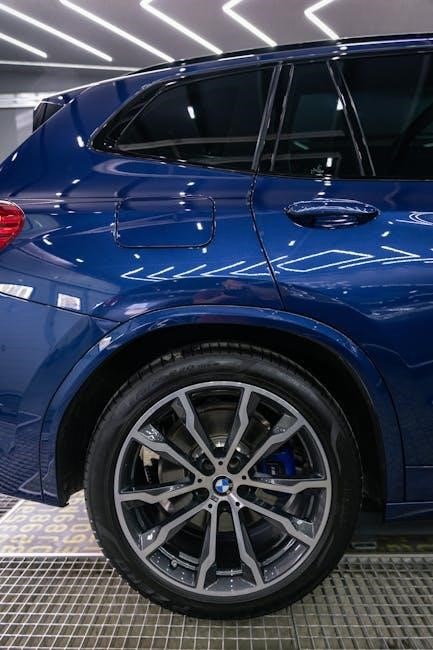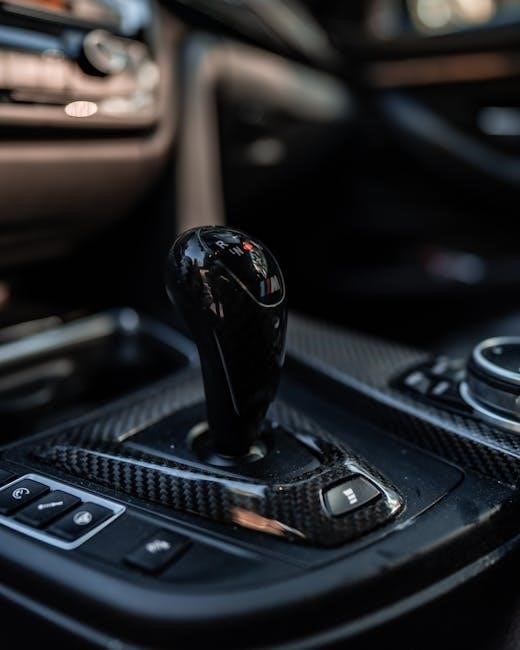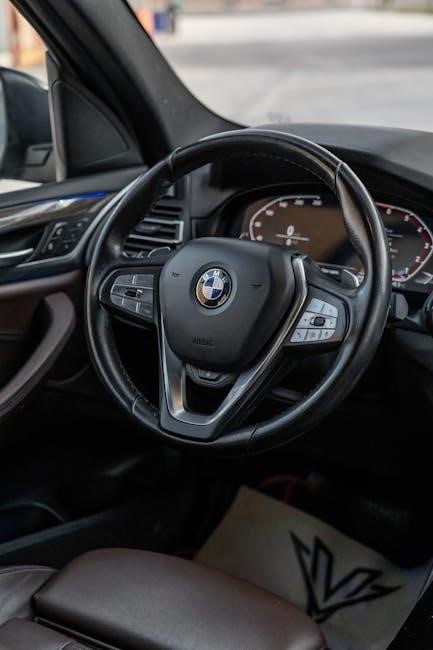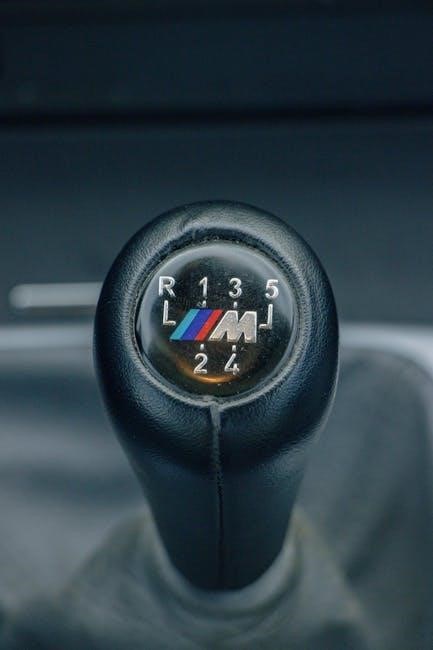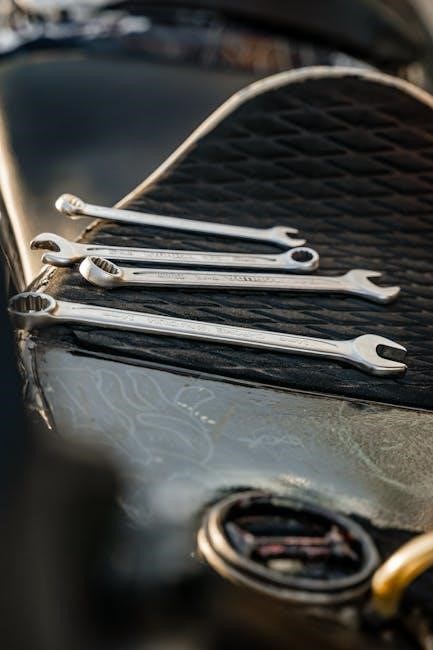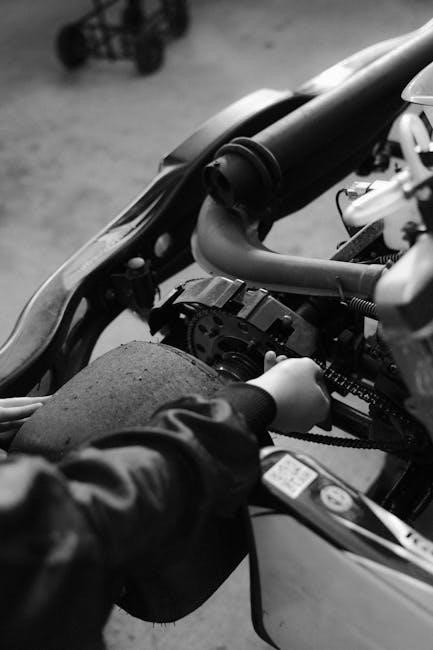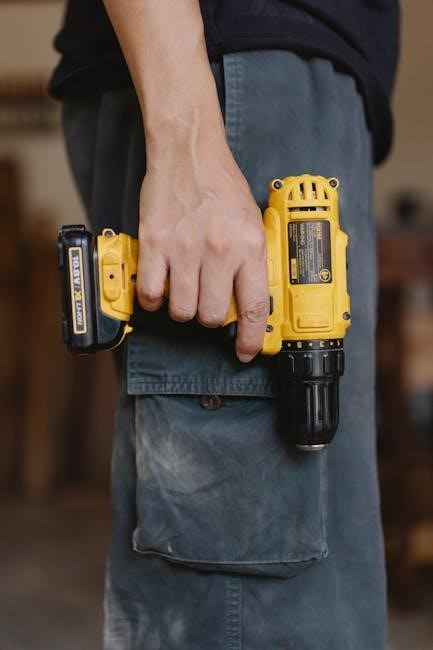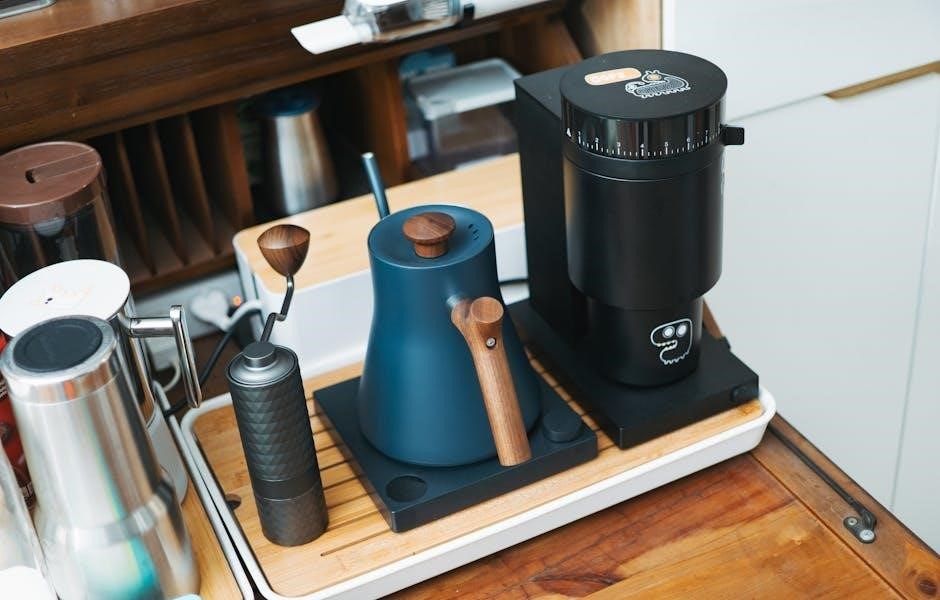
The Citizen Eco Drive Watch is a revolutionary timepiece powered by light, eliminating battery replacements․ Combining style and functionality, it offers precise timekeeping and eco-friendly innovation․

1․1 Overview of the Citizen Eco Drive Technology
Citizen Eco Drive Technology harnesses light to power watches, eliminating battery replacements․ It converts sunlight or artificial light into electrical energy, stored in a rechargeable battery․ This eco-friendly innovation ensures continuous operation, offering reliability and convenience․ The technology is a significant advancement in watchmaking, combining sustainability with precision timekeeping․ It appeals to environmentally conscious users and those seeking low-maintenance timepieces․ Eco Drive watches are durable and require minimal upkeep, making them a practical choice for everyday wear․ This technology exemplifies Citizen’s commitment to innovation and sustainability in watch design․
1․2 Importance of a User Manual for Eco Drive Watches
A user manual is essential for understanding and maximizing the potential of a Citizen Eco Drive Watch․ It provides detailed guidance on operating the watch’s unique features, such as light-powered technology and timekeeping functions․ The manual helps users troubleshoot common issues, ensuring optimal performance․ It also offers insights into maintaining the watch’s longevity and functionality․ By following the manual, users can customize settings, utilize advanced features, and resolve technical difficulties efficiently․ This resource enhances the overall user experience, making it indispensable for both new and experienced owners of Eco Drive watches․

Unboxing and Initial Setup
Unboxing reveals a sleek watch, manual, and packaging․ Initial setup involves adjusting the strap and exploring features, ensuring a smooth start with your Eco Drive timepiece․
2․1 What’s Included in the Box
Your Citizen Eco Drive Watch box typically includes the watch itself, a detailed user manual, a warranty card, and elegant packaging․ Some models may also include additional accessories like a spare strap or cleaning cloth․ The manual provides essential instructions for setup, feature usage, and maintenance․ Ensure all items are accounted for to fully enjoy your Eco Drive experience․ The packaging is designed to protect the watch and reflect its eco-friendly ethos, aligning with Citizen’s commitment to sustainability and quality craftsmanship․
2․2 First Impressions and Design Overview
The Citizen Eco Drive Watch impresses with its sleek, modern design and premium build quality․ The watch features a lightweight, durable construction, often with a stainless steel case and a comfortable strap․ Its clean dial design emphasizes readability, while subtle details like polished edges and a textured crown enhance its sophistication․ The Eco Drive technology is seamlessly integrated, with a low-profile solar panel under the dial․ Upon first wear, the watch feels balanced and comfortable, suitable for both casual and formal occasions․ Its eco-friendly nature is evident in its minimalist yet elegant aesthetic, making it a standout timepiece for everyday use․
2․3 Setting Up the Watch for the First Time

Setting up your Citizen Eco Drive Watch is straightforward․ Begin by pulling the crown to set the time and date, then push it back to secure․ Use the buttons to navigate through modes and adjust settings like alarms or timers․ Refer to the user manual for specific button functions․ Ensure the watch is fully charged by exposing it to light before first use․ Synchronize the time with a reliable source for accuracy․ Familiarize yourself with the watch’s features and customize settings to suit your preferences․ Proper setup ensures optimal performance and longevity of your Eco Drive Watch․

Understanding the Watch Features
The Citizen Eco Drive Watch features precise timekeeping, powered by light, ensuring accuracy and reliability․ Its sleek design combines style with functionality for effortless everyday use․
3․1 Timekeeping Functions and Modes
The Citizen Eco Drive Watch offers precise timekeeping with multiple modes, including date display and 12/24-hour formats․ It features a stopwatch, timer, and alarm functions for added convenience․ The watch also includes a perpetual calendar, ensuring accurate date settings without manual adjustments․ With its Eco Drive technology, it harnesses light to power its functions, eliminating the need for battery replacements․ These features make it a reliable and versatile accessory for daily use, combining functionality with eco-friendly innovation․

3․2 Additional Features (Alarms, Timers, etc․)
The Citizen Eco Drive Watch includes a range of convenient features beyond timekeeping․ It offers multiple alarms, perfect for daily reminders or appointments, and a timer function for tracking intervals․ The stopwatch feature allows precise measurement of events, while the date display ensures you stay informed․ Some models also include a dual-time zone feature, ideal for travelers․ These functions are easily accessible via the watch’s intuitive controls, making it a practical accessory for everyday use․ The Eco Drive technology ensures these features are powered sustainably, combining functionality with eco-friendly innovation․
3․3 Eco Drive Technology Explained
The Citizen Eco Drive Watch features Eco Drive technology, which harnesses light to power the watch, eliminating battery replacements․ Natural or artificial light charges a solar panel, storing energy in a rechargeable battery for continuous operation․ This eco-friendly system ensures reliability in low-light conditions, making it a sustainable choice for everyday wear․ The sleek design and lightweight construction enhance comfort without compromising functionality or style․ By reducing battery waste, Eco Drive promotes environmental responsibility, aligning with sustainability values․ This innovative approach not only extends the watch’s lifespan but also appeals to environmentally conscious consumers․ Exposure to light, even indoors, efficiently charges the battery, ensuring the watch runs smoothly without interruption․
Daily Use and Maintenance
Regularly clean the watch face and band to prevent dirt buildup․ Avoid extreme temperatures and ensure adequate light exposure for consistent battery performance․

4․1 Adjusting the Time and Date
To adjust the time and date on your Citizen Eco Drive Watch, pull the crown out to the “set” position․ Rotate the crown clockwise or counterclockwise to set the time․ For the date, pull the crown out one additional click and rotate it to select the desired date․ Ensure the watch is in a well-lit area to maintain power․ After setting, push the crown back in to secure the adjustments; Regularly check and update the time and date to ensure accuracy, especially after traveling across time zones or during daylight saving changes․
4․2 Using the Alarm and Timer Functions
Your Citizen Eco Drive Watch features multiple alarms and a countdown timer for convenience․ To set an alarm, press the ‘B’ button to enter the alarm mode․ Use the ‘C’ button to cycle through available alarms and the crown to set the desired time․ For the timer, press and hold the ‘B’ button until the timer mode appears․ Use the ‘C’ button to adjust the minutes and hours, then press ‘B’ to start․ The watch will signal the alarm or timer completion with a beep․ Ensure the watch is sufficiently charged for consistent functionality․
4․3 Caring for Your Eco Drive Watch
To maintain your Citizen Eco Drive Watch, ensure it receives adequate light to recharge․ Avoid prolonged exposure to extreme temperatures or chemicals․ Clean the watch with a soft cloth, focusing on the band and case․ Store it in a dry place when not in use․ Regularly inspect the strap for wear and tear․ Avoid submerging the watch in water beyond its specified depth rating․ For models with leather straps, avoid excessive moisture․ Proper care extends the watch’s lifespan and ensures optimal performance; Refer to the manual for specific cleaning solutions and maintenance tips․

Troubleshooting Common Issues
Identify and resolve common issues like time accuracy, alarm malfunctions, or battery concerns․ Refer to the manual for detailed solutions to ensure optimal watch performance and longevity․
5․1 Resolving Time Accuracy Problems
If your Citizen Eco Drive Watch shows time inaccuracies, ensure it is exposed to sufficient light for proper charging․ Reset the watch by pulling the crown out and turning it clockwise․ If issues persist, manually set the time using the crown․ For persistent problems, contact an authorized service center․ Regular maintenance and proper handling ensure precise timekeeping and extend the watch’s lifespan․ Always refer to the user manual for detailed troubleshooting steps to maintain accuracy and functionality․
5․2 Fixing Alarm and Timer Malfunctions
If your Citizen Eco Drive Watch experiences alarm or timer malfunctions, start by ensuring the settings are correctly configured․ Check that the alarm is enabled and the volume is set appropriately․ If the issue persists, reset the watch by pulling the crown out and turning it clockwise․ Ensure the watch is fully charged, as low power can affect functionality․ If problems remain, perform a factory reset by pressing and holding the lower-right button for 10 seconds․ For unresolved issues, contact an authorized service center for professional assistance․
5․3 Addressing Battery and Charging Concerns
If your Citizen Eco Drive Watch isn’t charging properly, ensure it’s exposed to sufficient light․ Direct sunlight is ideal, while indirect light may take longer․ Avoid obstructed light sources, as this can hinder charging․ If the watch stops functioning, place it under a bright light for at least 24 hours to recharge․ If charging issues persist, reset the watch by pulling the crown out and turning it clockwise․ Consult the user manual for specific reset instructions․ If problems remain, contact an authorized service center for professional assistance․
Advanced Features and Customization
The Citizen Eco Drive Watch offers advanced features like customizable settings, multiple time zones, and special modes․ Users can tailor functions to suit their lifestyle and preferences seamlessly․
6․1 Customizing Watch Settings

Customizing your Citizen Eco Drive Watch allows you to personalize its functions to suit your needs․ Adjust time zones, set alarms, and modify brightness levels for optimal use․ Users can also calibrate the watch’s accuracy and enable or disable specific features․ The intuitive design ensures easy navigation through settings, making it simple to tailor the watch to your lifestyle․ Whether you prefer a minimalist approach or advanced functionality, the Eco Drive Watch offers flexibility to enhance your daily experience․ Explore the user manual for detailed steps on customizing your timepiece efficiently․
6․2 Using the Watch in Different Modes
The Citizen Eco Drive Watch offers multiple modes to cater to various needs․ Time Mode displays the current time and date, while Alarm Mode allows you to set reminders․ Timer Mode helps you count down for specific tasks․ Light Mode activates the backlight for better visibility in the dark․ To switch modes, press the lower-right button to cycle through options․ Each mode is designed for efficiency, ensuring you can access the feature you need quickly․ This versatility makes the Eco Drive Watch a practical accessory for daily use, adapting seamlessly to different scenarios and preferences․ Explore the modes to maximize functionality․
6․3 Syncing with Other Devices
To enhance functionality, the Citizen Eco Drive Watch can be synced with compatible devices․ Download the dedicated app for your smartphone to pair the watch via Bluetooth․ Once connected, you can receive notifications, sync time settings, and access additional features․ Ensure the watch and device are in close proximity during pairing․ Keep the app updated for optimal performance․ Syncing allows seamless integration of data, such as activity tracking or alarm settings․ This feature expands the watch’s capabilities, making it a versatile tool for everyday use․ Refer to the app’s instructions for detailed pairing steps and troubleshooting tips․
Warranty and Support Information
Citizen Eco Drive Watches come with a 5-year warranty covering manufacturing defects․ Contact Citizen’s customer support or visit authorized service centers for assistance and repairs․
7․1 Understanding the Citizen Warranty
Citizen offers a comprehensive 5-year warranty for Eco Drive watches, covering defects in materials and workmanship․ This warranty ensures repairs or replacements for faulty components, excluding normal wear․ It applies to watches purchased from authorized dealers, with valid proof of purchase․ The warranty does not cover damage from misuse or accidents․ For international coverage, check regional Citizen websites․ This warranty underscores Citizen’s commitment to quality and customer satisfaction, providing peace of mind for Eco Drive watch owners․
7․2 Contacting Customer Support
Citizen Eco Drive Watch users can contact customer support through various channels․ Visit the official Citizen website for regional contact information, including phone numbers and email addresses․ Many countries offer dedicated support lines, ensuring prompt assistance․ For general inquiries, use the ‘Contact Us’ form on the website․ Live chat is also available on some regional sites․ When reaching out, have your watch’s model number and purchase details ready for efficient service․ For repairs or maintenance, locate authorized service centers through the Citizen website to ensure genuine parts and expert care․
7․3 Finding Authorized Service Centers
To locate authorized service centers for your Citizen Eco Drive Watch, visit the official Citizen website․ Use the ‘Service Center Locator’ tool, which allows you to search by region or country․ Enter your location to find nearby centers․ Contacting customer support can also provide recommendations․ Ensure the center is authorized to guarantee genuine parts and expert service․ Avoid unauthorized providers to maintain your watch’s warranty and performance․ Regular maintenance by professionals ensures longevity and accuracy of your Eco Drive timepiece․
The Citizen Eco Drive Watch offers a perfect blend of style, functionality, and sustainability․ By following this manual, users can optimize its performance and enjoy lasting satisfaction․
8․1 Final Tips for Optimal Use
For optimal use, ensure your Citizen Eco Drive Watch is regularly exposed to light to maintain its charge․ Clean the watch face and band periodically to prevent damage․ Adjust the band for a comfortable fit and use the alarm and timer functions wisely․ Store the watch in a cool, dry place when not in use to avoid scratches․ Sync the time regularly for accuracy and avoid extreme temperatures․ By following these tips, you can enjoy your Eco Drive Watch’s reliability and style for years to come․
8․2 Benefits of Owning a Citizen Eco Drive Watch
Owning a Citizen Eco Drive Watch offers numerous benefits, including its eco-friendly, light-powered technology that eliminates battery replacements․ The watch is durable, with a long-lasting design that withstands daily wear․ Its sleek and versatile style suits both casual and formal occasions․ The Eco Drive technology ensures reliability and accuracy, while the user-friendly interface makes it easy to navigate․ Additionally, the watch is low-maintenance, requiring only occasional light exposure to function․ These features make it a practical and stylish choice for anyone seeking a dependable timepiece that combines innovation with timeless appeal․















